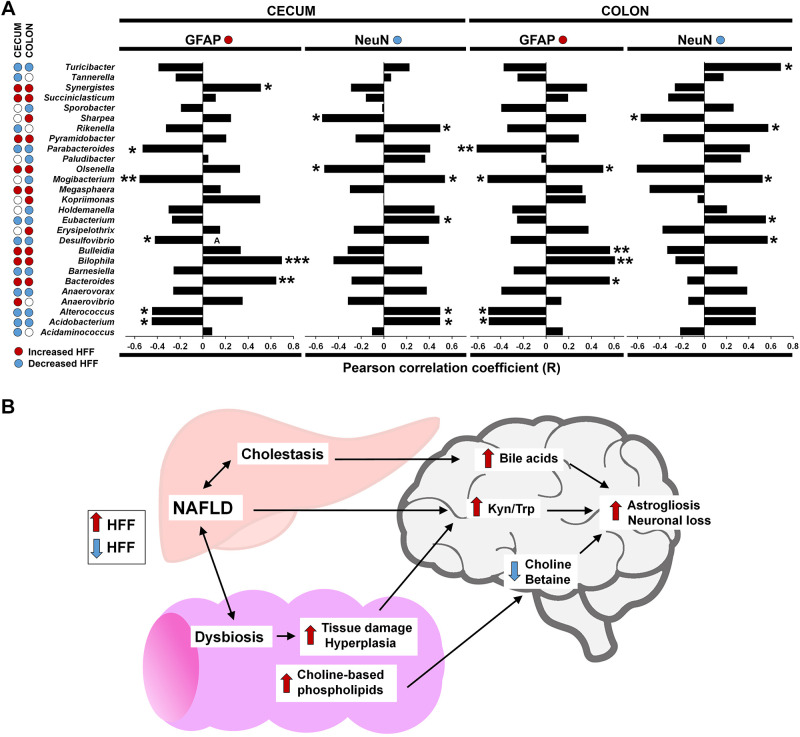Fig. 6.
Diet-induced changes in cecum and colon microbiota were correlated with markers of neurodegeneration. A: Pearson correlation coefficient between relative counts of bacteria in cecum and colon and immunostaining for glial fibrillary acidic protein (GFAP) and neuronal nuclei (NeuN) in frontal cortex of juvenile Iberian pigs (n = 4–6 animals/treatment). Only genera that were significantly different between control (CON) and high-fructose high-fat (HFF) groups were included in the analysis. Blue and red dots represent bacteria increased and decreased in HFF-fed pigs compared with CON. *P ≤ 0.05; **P ≤ 0.01; ***P ≤ 0.001. B: graphical abstract summarizing the proposed mechanisms linking diet-induced nonalcoholic fatty liver disease (NAFLD) with neurodegeneration in juvenile Iberian pigs. Hepatic injury, cholestasis, colonic hyperplasia and dysbiosis may have dysregulated 1-carbon, bile acid, and tryptophan metabolism in frontal cortex, causing astrogliosis and neuronal loss.

